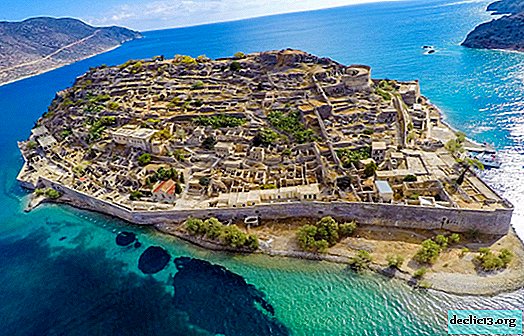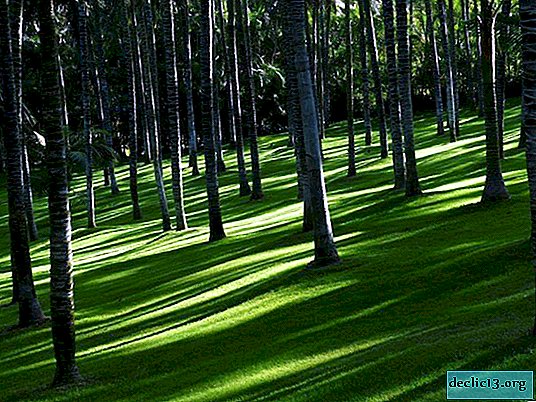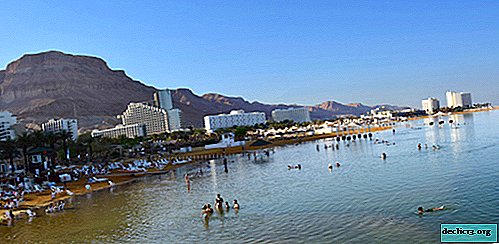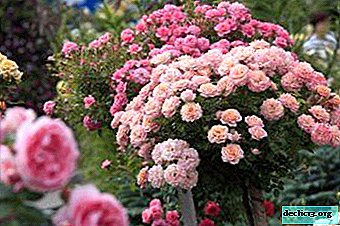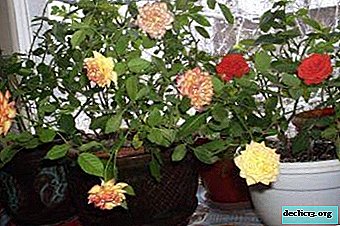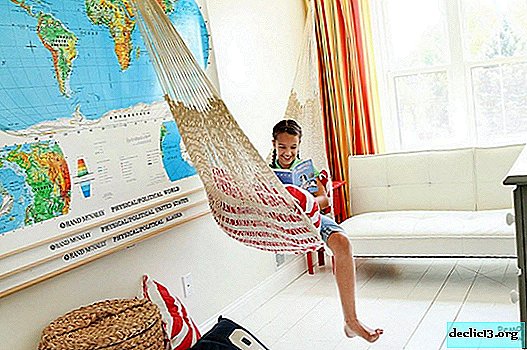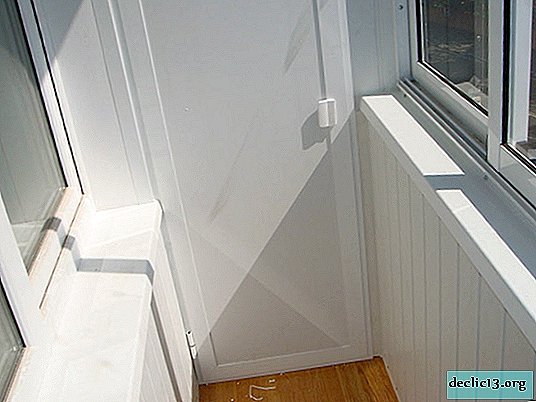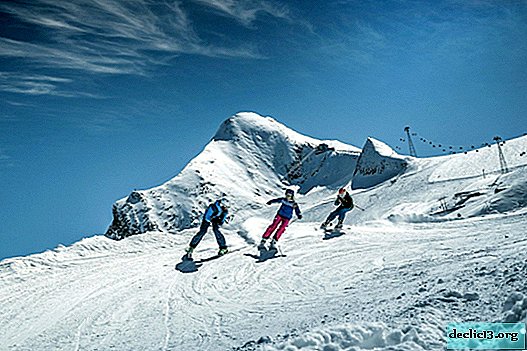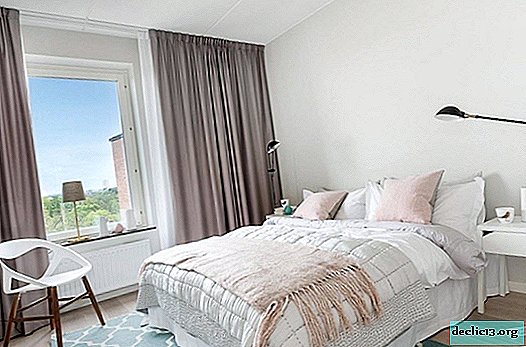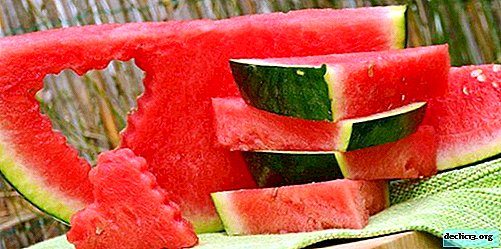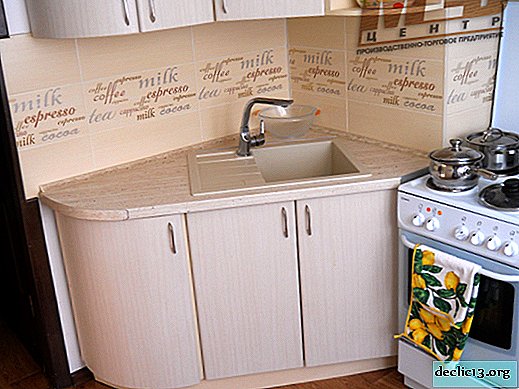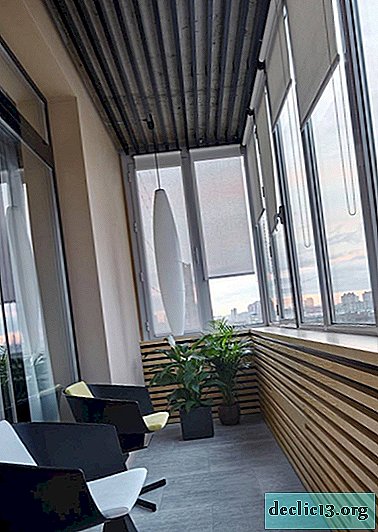Innsbruck, Austria - Top Attractions
In the Alps, on the southern slopes of the Nordkette ridge, where the Inn and Sill rivers merge together, the city of Innsbruck stands. It belongs to Austria, and is known throughout the world as an excellent ski resort; accordingly, winter is the hottest season here. In winter, all museums and restaurants work in this city, and on the main street it is crowded at any time of the day. In summer and autumn, people come here to do mountaineering and hiking, but still there is no such a large influx of holidaymakers. Innsbruck offers its guests a huge number of attractions, and it is at this time of year that you can safely and without fuss see them.
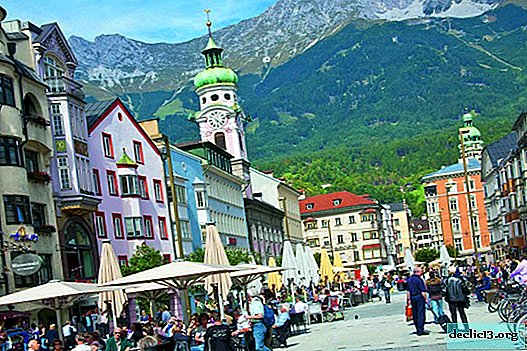
Going to Innsbruck, you need to carefully plan your trip, especially if it is short. Indeed, if you know exactly what to watch, then even in one day you can see many sights in Innsbruck. In order not to miss anything important, check out our selection of the most interesting sights of this famous Austrian resort.
But first, you need to mention the Insbruck Card. The fact is that prices in Austria are high. For example:

- a sightseeing tour (2 hours) in Innsbruck with a Russian guide costs 100-120 €,
- a room in an inexpensive hotel 80-100 € per day,
- travel by public transport 2.3 euros (2.7 ticket from the driver),
- taxi 1,70-1,90 € / km.
To save money during your vacation, immediately upon arrival in Innsbruck you can go to the Tourist Infromation office and buy an Insbruck Card. This card is available in three versions: for 1, 2 and 3 days. Since September 2018, its cost is 43, 50 and 59 €, respectively. For those who come to Austria, to Innsbruck, and want to see many attractions of this city in one day, the Insbruck Card opens up additional possibilities. You can read about it on the website www.austria.info.
Street of Maria Theresa
The historical center of Innsbruck is divided into 2 districts: City Center and Old Town.

The City Center is located around Maria-Theresien-Strasse Street, which starts from the Arc de Triomphe and over the course of the whole quarter has the appearance of a tram highway. Then the tram tracks turn right, and Maria Theresa Street turns into a pedestrian street.
Where the pedestrian zone begins, a monument is erected in honor of the liberation of Tyrol from the Bavarian troops in 1703. The monument is a column, directed up 13 meters (it is called the column of St. Anne), at the top of which stands a statue of the Virgin Mary. Near the column there are statues of St. Anne and St. George.

The pedestrian part of Maria Theresa Street is so wide that it is worthy to be called an area. Consisting of small houses painted in different colors and having different architectures. There are many shops, souvenir shops, cozy cafes and small restaurants. Tourists always gather on Maria Theresa Street, especially in the evening, but this does not make it crowded and noisy.
A continuation of Maria-Theresien-Strasse is Herzog-Friedrich-Strasse, leading directly to the Old Town.
Sights of the Old Town of Innsbruck
The old town (Altstadt von Innsbruck) is quite small: only one block of several narrow streets, around which a walking route is arranged with a ring. It was the Old Town that became the place of concentration of the most important sights of Innsbruck.
House "Golden Roof"
House "Golden Roof" (address: Herzog-Friedrich-Strasse, 15) is known throughout the world as a symbol of Innsbruck.

In the XV century, the building was the residence of Emperor Maximilian I, and it was on the orders of the emperor that a golden bay window was added to it. The roof of the bay window is covered with gilded copper tiles, a total of 2657 plates. The walls of the building are decorated with paintings and stone reliefs. The reliefs depict fabulous animals, and the family coat of arms, scenes of historical events are present in the painting.
It is best to come to the Golden Roof house in the morning: at this time, the sun's rays fall so that the roof shines, and the painting is clearly visible. In addition, in the morning there are almost no tourists here, and you can safely stand on the royal loggia (this is allowed), look from it at the city of Innsbruck and take stunning photos in memory of Austria.
Now in the old building is a museum dedicated to Maximilian I. The expositions present historical documents, ancient paintings, knightly armor.

The museum operates on such a schedule:
- December-April and October - Tuesday-Sunday from 10:00 to 17:00;
- May-September - Monday-Sunday from 10:00 to 17:00;
- November is closed.
For adults, admission costs 4 €, preferential - 2 €, family 8 €.
City tower
Another symbol and landmark of Innsbruck is located very close to the previous one, by the address Herzog-Friedrich-Strasse 21. This is the city tower of Stadtturm.

This building is made in the shape of a cylinder and reaches a height of 51 m. When viewed from the tower, it seems that they installed a dome from another building - it looks too elegant on the powerful high walls. The fact is that initially on the tower, built in 1450, there was a spire, and she received the green onion-shaped dome with simple figures made of stone only after 100 years. An original decoration is a large round clock.
Right above this watch, at an altitude of 31 m, is a circular viewing balcony. To climb it, you need to overcome 148 steps. From the observation deck Stadtturm, the Old Town of Innsbruck opens in all its glory: the roofs of small, as if toy, houses on medieval streets. You can see not only the city, but also the alpine landscapes.

- A ticket to the observation deck costs 3 € for adults and 1.5 € for children, and if you have an Innsbruck Card, admission is free.
- You can visit this attraction on any day at such times: October-May - from 10:00 to 17:00; June-September - from 10:00 to 20:00.
St. Jacob's Cathedral
St. James Cathedral in Innsbruck located upon Domplatz Square (Domplatz 6).

The cathedral (XII century) is built of gray stone and has a rather austere appearance, but at the same time it is recognized as one of the most beautiful temples in Austria. The facade of the building is framed by tall towers with bunk domes and the same clock. Above the tympanum of the main entrance, an equestrian sculpture of St. Jacob is placed, and in the niche of the tympanum there is a gilded statue of the Virgin.
The complete opposite of the strict facade is rich interior design. The completion of the many-sided marble columns was made by elegant carved capitals. And the decoration of the semi-arches, on which the tall arch rests, is a refined gilded stucco molding. The ceiling is covered with bright paintings reflecting scenes from the life of St. Jacob. The main relic - the icon "Virgin Mary the Helper" - is located on the central altar. A blue organ with gold decor is a worthy addition to the temple.

Every day at noon in the Cathedral of St. James, the sound of 48 bells rings.
You can visit the temple and see its interior for free, but for the opportunity to take a photo of this attraction of Innsbruck you need to pay 1 €.
From October 26 to May 1, St. Jacob's Cathedral is open at this time:
- Monday to Saturday from 10:30 to 18:30;
- on Sundays and holidays from 12:30 to 18:30.
Hofkirche Church
Hofkirche Church on Universitaetsstrasse 2 is the pride of all Austrian residents, and not just the landmark of Innsbruck.

The church was built as a tomb for Emperor Maximilian I by his grandson Ferdinand I. The work lasted more than 50 years - from 1502 to 1555.
The interior is dominated by elements of metal and marble. A huge sarcophagus of black marble, decorated with relief images (a total of 24) of scenes from the life of the emperor. The sarcophagus is so high - on the same level with the altar - that it caused outrage in church authority. This is the main reason why the body of Maximilian I was buried in Neustadt, and not brought to Hofkirche.
Around the sarcophagus is a sculptural composition: the kneeling emperor and 28 members of the royal dynasty. All statues are taller than a man, and they are called the "black retinue" of the emperor.

In 1578, the Silver Chapel was added to Hofkirche, which serves as the tomb of Archduke Ferdinand II and his wife.
Hofkirche on Sunday is open from 12:30 to 17:00, and on other days of the week from 9:00 to 17:00. It should be noted that the attraction is closed for free visits, but you can still go in and see its interior decoration. Since the church is practically combined with the Tyrolean Museum of Folk Art, you can:
- buy a common ticket to visit the museum and the church at the same time;
- first arrange with the museum staff for unhindered access to the church through its main entrance (museum ticket office telephone number +43 512/594 89-514).
Imperial Palace "Hofburg"
Kaiserliche hofburg standing on the street Rennweg, 1. Throughout its existence, the palace has been rebuilt several times, supplemented by new towers and buildings. Now the construction has two equal wings, on the gables of the central facade there is the coat of arms of the Habsburgs. The Gothic tower that was built back in the time of Maximilian I survived. The chapel built in 1765 has also been preserved.

Since 2010, after the restoration, the Hofburg Palace in Innsbruck has been open for excursions. But so far only a few can be seen from the 27 existing halls.
The pride of the "Hofburg" is the Main Hall. Its ceilings are decorated with original multicolor paintings, and portraits of the empress, her husband and their 16 children hang on the walls. This room is spacious and bright, and the wrought-iron chandeliers and wall lamps, which are hung in large numbers here, provide additional artificial lighting.
- Hofburg Palace is open to visitors on any day from 09:00 to 17:00.
- An adult ticket costs € 9, but with an Innsbruck Card admission is free.
- In the premises of this attraction of Innsbruck, photos are prohibited.
By the way, for people who are not familiar with the history of Austria and do not know German or English, a tour of the palace may seem complicated and boring. In this case, you can simply take a walk in the opposite Hofgarten court park.
Ambras Castle
Ambras Castle in Innsbruck is one of Austria's most popular attractions. This is confirmed by the fact that the castle is imprinted on a silver coin of 10 €. Schloss Ambras is located on the southeastern outskirts of Innsbruck, on top of an alpine hill near the Inn River. His address: Schlossstrasse, 20.

The snow-white palace ensemble is the Upper and Lower castles, and the Spanish Hall connecting them. In the Upper Castle there is a portrait gallery, where you can see about 200 paintings by famous artists from around the world. The lower castle is the Chamber of Arts, the Gallery of Miracles, the Chamber of Arms.
The Spanish Hall, built in the form of a magnificent gallery, is considered the most beautiful freestanding Renaissance hall. You can see mosaic doors, a coffered ceiling, unique murals on the walls with the image of the 27 rulers of the land of Tyrol. In the summer, Innsbruck Early Music Festivals take place here.

Schloss Ambras is surrounded by a park, on the territory of which a variety of theme parties are organized each year.
- Schloss Ambras is open every day from 10:00 to 17:00, but in November it does not work! Last entry 30 minutes before closing.
- Visitors under the age of 18 are allowed to visit the palace complex for free. Adults can see this attraction of Innsbruck from April to October for 10 € and from December to March for 7 €.
- An audio guide can be borrowed for 3 €.
Cable car Nordkettenbahnen
The Nordkette funicular not only makes it possible to see the beauty of mountain landscapes and urban areas from a height, but it is also a famous futuristic attraction throughout Austria. This cable car is a kind of hybrid lift and railway. Nordkettenbahnen has 3 successive funiculars and 4 stations.

The first station - the one from where the cars start on the road - is located in the center of the Old Town, near the Congress building.
Hungerburg

The next station at an altitude of 300 m. Hungerburg is very rarely covered by clouds, and it offers wonderful views. From this station you can return to Innsbruck on foot along one of several routes of different difficulty levels. Here the “rope path” begins for those who are fond of mountaineering - it goes through 7 peaks, and it will take about 7 hours to go through it. If there is no equipment, it is rented out at the sporting goods store at the next station, Seegrube.
Seegrube

Equipped at an altitude of 1900 m. From this height you can look at the Intal and Vittal valleys, the mountain peaks of the Zillertal region, the Stubai Glacier, you can even see Italy. As with the previous station, from here you can go to Innsbruck on a walking route. You can also go on a mountain bike, but you need to consider that the descent for mountain bikes is difficult.
Hafelekar
The last Hafelekar station is the highest - it is 2334 m from the foot of the mountain. During the journey from Seegrube to this station, the cable car is often closed by clouds, and people sitting in the wagons have the feeling of flying above the ground. From the Hafelekar observation deck you can see Innsbruck, the Intal valley, the Nordkette mountain range.
 Useful tips and practical information.
Useful tips and practical information.- The price of tickets for the Nordkette varies from 9.5 to 36.5 € - it all depends on which stations the trip is made between, whether the ticket will be one way or both. You can learn more about this on the official website www.nordkette.com/en/.
- Nordkette works seven days a week, but each station has its own schedule - the upper ones open later and finish work earlier. In order to be able to visit all stations, you need to come to the point of departure for the wagons at the Congress building by 8:30 - time until 16:00 is enough for a tour.
- Although all cabins-wagons have panoramic windows and a roof, it’s still better to sit in the tail of the last trailer - in this case it will be possible to freely admire the picturesque scenery and even take everything off camera.
- Before the tour, it is advisable to see the weather forecast: on a cloudy day, visibility is significantly limited! But you need to dress warmly in any weather, because even in the midst of summer it is quite cold in the mountains.
- It is by name on the funicular that it is most convenient to get to such famous sights of Innsbruck as the Alpine Zoo and the Bergizel ski jump.

Ski jump "Bergisel"
Since its opening, the Bergisel Ski Jump has become not only the futuristic attraction of Innsbruck, but also the most significant sports facility in Austria. Among sports fans, the Bergisel ski jump is known for hosting the 3rd stage of the Ski Jumping World Cup - “Four Ski Jumps Tour”.

Thanks to the latest reconstruction, the building, with a length of about 90 m and a height of almost 50 m, has become a peculiar and harmonious synthesis of a tower and a bridge. The tower ends with a smooth and “soft” construction, in which there is an inclined ramp for dispersal, a panoramic observation deck and a cafe.
You can climb to the top of the attraction by steps (there are 455 of them), although it is much more convenient to do this on the passenger elevator. During the competition from the observation deck you can watch the athletes from above. Ordinary people tend to visit the tower in order to take a photo of the city of Innsbruck and look at the views of the Alpine mountain range.

To visit this sporting attraction in Austria, you need to take the Nordkettenbahnen cable car to the upper Hafelekar station, and from there go on foot or take the elevator directly to the ski jump. You can also come here with The Sightseer sightseeing bus - this option is especially beneficial with the Innsbruck Card.
- Ski jump "Bergisel" located at: Bergiselweg 3
- Admission to the ski jump is paid, until December 31, 2018, the price remains 9.5 €. Detailed information on the cost of the admission ticket and the schedule of the sports complex can be found on the website www.bergisel.info.
Alpine zoo
Notable places of Innsbruck include its themed Alpine Zoo - one of the highest in Europe. It is located on the slope of Mount Nordketten, at an altitude of 750 m. His address: Weiherburggasse, 37a.

Alpenzoo is home to just over 2,000 animals.In the zoo you can see not only wild, but also domestic animals: cows, goats, sheep. Absolutely all animals are clean and well-fed, they are kept in spacious open-air cages with special shelters from the weather.
The vertical architecture of the zoo is striking: the enclosures are located on the side of the mountain, and winding paved paths are laid past them.
Alpenzoo is open all year, from 9:00 to 18:00.
Admission ticket costs (price is in euros):

- for adults - 11;
- for students and retirees with a document - 9;
- for children 4-5 years old - 2;
- for children 6-15 years old - 5.5.
You can get to the zoo:
- from the center of Innsbruck on foot in 30 minutes;
- on the Hungerburgbahn funicular;
- by car, but there are few parking lots nearby and they are paid;
- on the Sightseer city sightseeing bus, with the Innsbruck Card, travel and admission to the zoo will be free.
Swarovski Museum
What else to see in Innsbruck is advised by many tourists who have already been there, is the Swarovski Museum. In the original in German, the name of this museum is spelled Swarovski Kristallwelten, but it is also known as the “Swarovski Museum”, “Crystal Worlds of Swarovski”, “Crystal Worlds of Swarovski”.

It should be clarified right away that Swarovski Kristallwelten in Austria is not a museum of the history of a famous brand. It can be called a surreal, and sometimes completely insane theater, a museum of crystals or modern art.
The Swarovski Museum is located not in Innsbruck, but in the small town of Wattens. From Innsbruck there go about 15 km.
Swarovski treasures are placed in a "cave" - it is located under a grass-covered hill, around which a large park is located. This world of art, entertainment and shopping covers an area of 7.5 hectares.

The entrance to the cave is guarded by the Guardian giant, however, only his head is visible with huge crystal eyes and a mouth from which a waterfall flows.
In the lobby of the "cave" you can see variations on the theme of the famous creations of Salvador Dali, Keith Haring, Andy Warhol, John Brecke. But the main exhibit here is the centenar - the largest faceted crystal in the world, whose weight is 300,000 carats. The facets of the centenar shimmer, radiating all the colors of the rainbow.
In the next room, the Jim Whiting Mechanical Theater opens to the eye, in which you can see the most unexpected objects flying and dancing.
Further visitors will find an even more incredible illusion - staying inside a huge crystal! This is the "Crystal Cathedral", which is a spherical dome of 595 elements.
The journey ends in the Crystal Forest Hall. Trees in a magical forest hang from the ceiling, and in each of them there is an artificial core with a video composition. And here are unrealistic wire clouds with thousands of crystal droplets.
Separately, there is a children's playhouse - an unusual 5-story cube with a variety of slides, trampolines, cobwebs and other entertainments designed for visitors aged 1 year to 11-13 years.

Those who want to not only look at the crystals, but also to purchase something as a keepsake are waiting for the largest Swarovski store on the planet. Prices for products start from 30 €, there are exhibits and 10 000 € each.
Address Swarovski Kristallwelten: Kristallweltenstraße 1, A-6112 Wattens, Austria.
Practical information for tourists
- A special company shuttle travels from Innsbruck to the museum and back. His first flight at 9:00, only 4 flights with an interval of 2 hours. There is also a bus running along the Innsbruck-Wattens route - you need to get off at the Kristallweltens stop. This bus runs from 9:10, departure from Innsbruck Central Bus Station.
- Admission to the museum for adults costs 19 €, for children from 7 years to 14 years - 7.5 €.
- Swarovski Kristallwelten is open every day from 8:30 to 19:30, and in July and August from 8:30 to 22:00. Last entry an hour before closing. In order not to stand in huge queues for tickets and then not jostle in the halls, it is best to come to the museum no later than 9:00.
- When visiting the Swarovski Museum, you can get complete information about each object through a smartphone. You just need to enter the free wireless network for guests "c r y s t a l w o r l d s" and use the link www.kristallwelten.com/visit to get a mobile version of the tour.
Conclusion
We hope this article will help you decide what sights in Innsbruck are worth seeing in the first place. Of course, far from all the interesting places of one of the most beautiful cities in Austria are described here, but with a limited time trip they will be quite enough for exploring.
Dynamic video in high quality with the sights of Innsbruck and its surroundings. Take a look!

